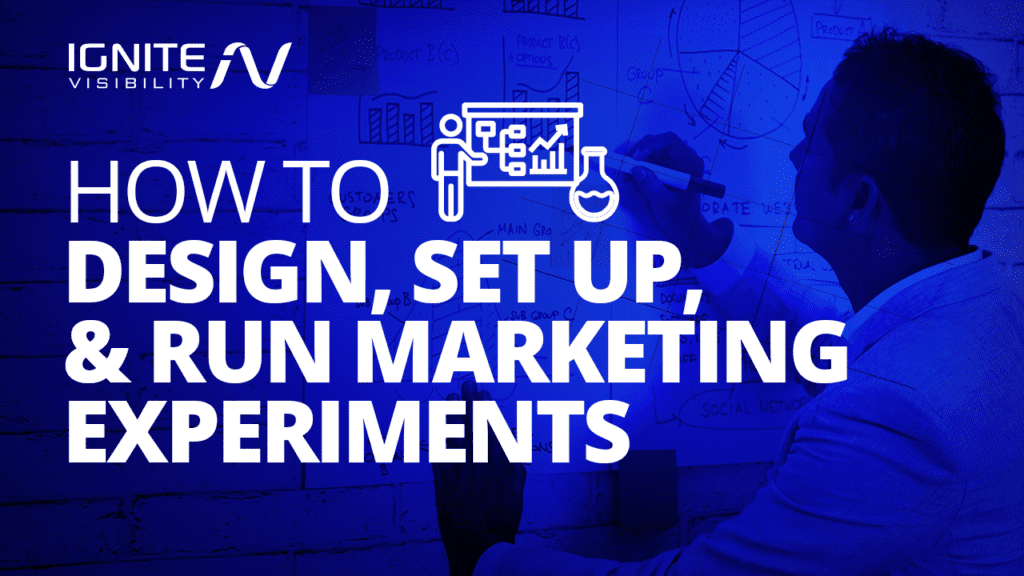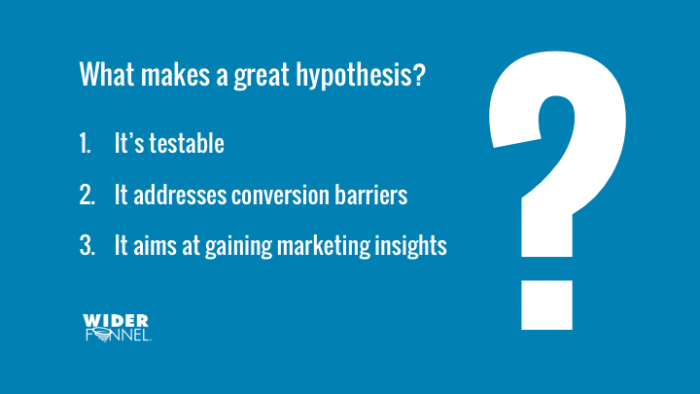In this blog we will analyze the formula HubSpot used to grow traffic 106% through a marketing experiment. We will also talk about our 6 step framework that works like a charm 😉
What We’ll Cover:
- What are Marketing Experiments?
- Why Digital Marketers Should Use Marketing Experiments
- How to Design a Marketing Experiment
- Tips on Running your Marketing Experiment
- Types of Marketing Experiments
What are Marketing Experiments?
Whether it’s a smartphone or a car, everything we use was finalized after a series of experiments.
Across industries, experiments are typically comprised of the following:
- Hypothesis: What are your expectations? What changes should be made?
- Methodology: Are you planning on using a statistical test on your data? If so, which one and why?
- Sample Size: How many subjects will be included? Is there a number you have in mind?
- Analysis: What data are you analyzing? Any specific metrics you’ll be tracking?
- Execution Plan: How will you run your test(s)? When and where?
- Dependencies: Are there any resources you need for the test? Budget or staff-related?
These days, many marketers have trouble creating a structurally sound hypothesis and don’t have a grasp on how to distinguish between a good and bad metric.
A marketing experiment is essentially a type of market research in which an organization runs a series of tests to see which marketing avenues will improve the outcome of a campaign.
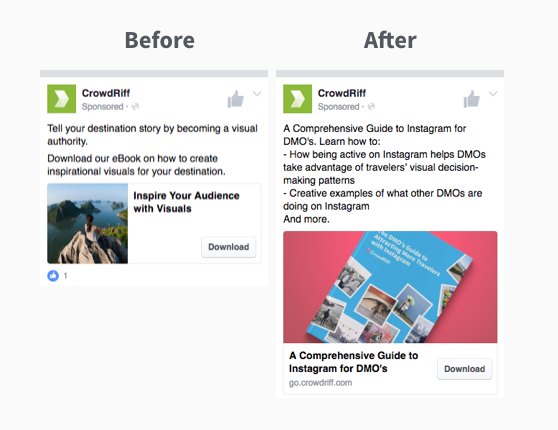
Every week ThinkGrowth optimizes their lowest-performing FB Ad
Why Digital Marketers should Use Marketing Experiments
While digital marketing isn’t an exact science, experimenting is necessary because it arms you with valuable information, which is not rooted solely on bias, rumors, or interpretation, but on truth.
The ultimate goal of marketing for most businesses is to promote their products and services, grow their audience, target new personas, boost brand recognition, and increase their revenue stream.
You can try hitting these targets with what you think will work, but isn’t it much more beneficial for you, in the long run, to know what your consumers want beforehand?
With marketing experiments, you’re able to gauge a reaction and retrieve important data, which will enable you to create a more effective campaign without the added guesswork.
Experimenting removes the risk of taking a metaphorical shot in the dark with your marketing campaigns.
In addition to gaining valuable insights into what your customers want, one of the main benefits of marketing experiments is being adaptable and open to change. A strategy that may have worked four or five years ago may not even scratch the surface today.
The more ideas and methods you test, the more you can embrace emerging trends and make your campaigns more compelling and useful to your audience.
If you can spot rising developments in the digital marketing world early, you can stay ahead of the curve and give your business a better chance of outperforming your competitors.
How to Design a Marketing Experiment
There’s no question that testing and optimizing works. In a recent HubSpot study, a marketer was able to double the number of monthly leads by optimizing older blog posts, leading to an increase in organic search volume by 106%.
To ensure you get similar or better results, we’ve outlined the top six steps needed to conduct a winning marketing experiment:
1. Form a Hypothesis
Much like the scientific method, put together a few scenarios of what you think will happen during this experiment. But, avoid being vague.
You don’t want it to be open to interpretation. You need a hypothesis that you can measure and easily prove or disprove.
2. Compile Research
Now that you’ve determined your hypothesis, it’s time to research. This is a key component in the process as it lets you see what experiments have worked or failed in the past. That way, you can maximize the potential outcomes of your experiment.
Plus, this step allows you to narrow down or adjust your hypothesis. You may have to reconfigure some elements to achieve the desired results.
3. Select the Appropriate Metrics
With plenty of research under your belt, you can choose the right metrics to measure.
These metrics should indicate whether or not your hypothesis is true.
Some of the most popular metrics to track include click-through rate, lead to customer ratio, and return on ad spend.
4. Execute Your Experiment
During the design phase, you want to start testing variations. Typically, this involves keeping one control, meaning one variable will stay the same during the duration of the experiment.
From there, build a timeline and establish a method for collecting results. After choosing your recipients, you can move on to the next phase.
5. Conduct A/B Testing
A/B testing is one of the most highly regarding types of hypothesis testing in the industry.
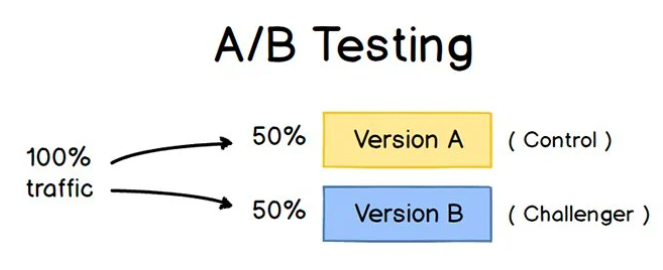
A/B Testing Image Courtesy: Conversionxl
It allows you to compare the original version of a piece of content to another version and find out which one performed better with your target audience.
This is achieved by randomizing your visitors into two separate groups and then showing them a different piece of content.
The content isn’t just limited to web pages. Feel free to run these tests with headlines, calls to action, emails, design, navigation, forms, and ads.
6. Analyze Findings
Alas—the final step! You have officially reached the point of reviewing your results.
This is the moment of truth where you can see if you have proven or disproven your hypothesis.
The metrics we covered in step three will determine its validity. If your hypothesis failed the test, start brainstorming new approaches and repeat the process once again.
Tools to Help
Your data is too precious to lose. From inception to completion, there are plenty of workflow tools to help you track your marketing experiments, including:
- Trello
- HubSpot
- Process Street
- Hive
- TeamworkIQ
- ProofHub
- Manifestly
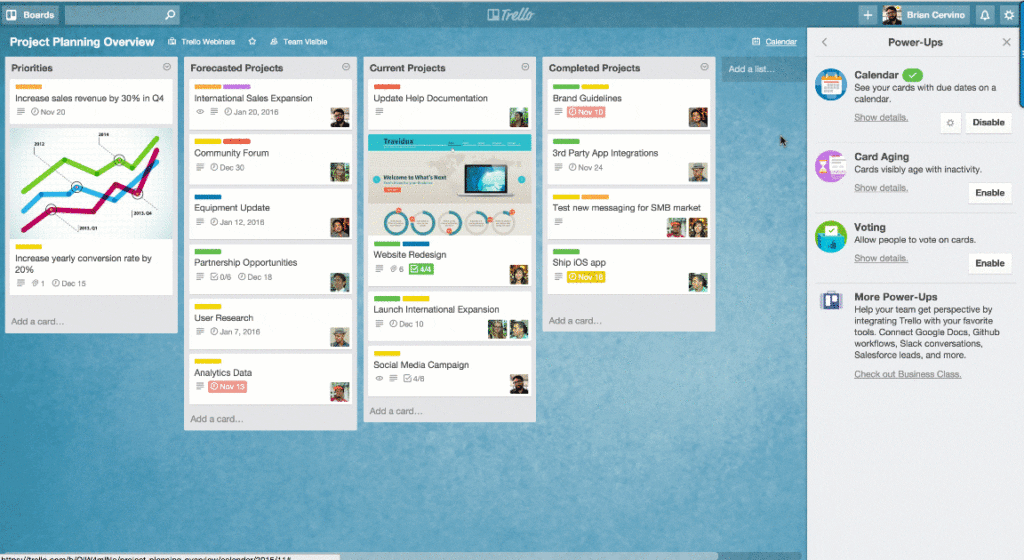
Tools like Trello can be a great multifaceted platform for marketing experiments
Tips on Running Your Marketing Experiment
With an industry that’s ever-changing, some marketing strategies that are considered “tried and true” may actually be “tried and no longer true.”
Here are a few pointers to help you strike the perfect balance and navigating new experiments:
- Share plans regularly with your team. Part of experimentation entails keeping other team members up to speed with what experiments are running.
- Don’t test too many elements at the same time. It’s much harder to isolate exactly which component influenced the failure or success of the test the most.
- Use the right tools. Not all are equally effective, so make sure you pick the tools you need to produce meaningful results.
- Consider external factors. It ‘s not a good idea to compare website traffic during the days it gets the highest traffic to the days when it sees lower traffic due to external factors like promotions, holidays, and so on.
- Don’t alter experiment settings in the middle of you’re a/B test. You must commit to the experiment completely once it’s launched or risk skewing the results.
Types of Marketing Experiments
There’s an endless list of online marketing experiments to try out. We’ve managed to condense it down to the top five:
Email Testing
Your email subscribers are arguably the ones who are most engaged with your brand. So it’s crucial that you deliver content that will capture their interest, encourage them to take action, and convert.
Try testing out the subject line as that often is a huge factor on whether the recipient will open your email or not. Maybe personalize one subject line and not the other during the A/B testing phase?

Rosssimmonds Top 15 emojis by subject line is a great example of a marketing experiment
You could also make small, incremental changes to the headlines, body copy, and graphics.
But, focus on one feature at a time. It’ll spare you the headache of tracking multiple things at once.
Social Media Testing
Visuals play a pivotal role in social media. It’s what users first see when they come across your ad.
By running digital marketing experiments, you can choose a visual that will better resonate with your customer base.
Consider testing out different hashtags as well.
Pay-per-Click (PPC) Testing
Landing pages are made up of several elements, making it an ideal breeding ground for designing marketing experiments.
From headlines and videos, to font color and size, testing each of these aspects can put you on the path towards building a more impactful landing page.
Case Study Testing
Nothing establishes credibility and trust quite like case studies and testimonials.
Instead of making assumptions here about what your audience may like, examine existing testimonials.
You might need to include quotes from clients in various roles instead of just those in executive management. Or you might need to swap your case study for an updated one.
Meta Description Testing
If your other marketing assets are ranking well, you should still find new ways to improve your click-through rate.
Treat this content like you would a piece of sales copy. Every word needs to count.
Run tests on both meta descriptions and title tags to see which one will receive more clicks.
Replicate what’s good and throw out the bad.
Wrapping Up
The act of testing and refining is not just an essential part of marketing, but of business in general.
The next time you think you’ve run all of the marketing experiments humanly possible, think again.
The reality is there are plenty of opportunities for testing that you likely haven’t thought of.
When in doubt, consult our guide and start experimenting today!
